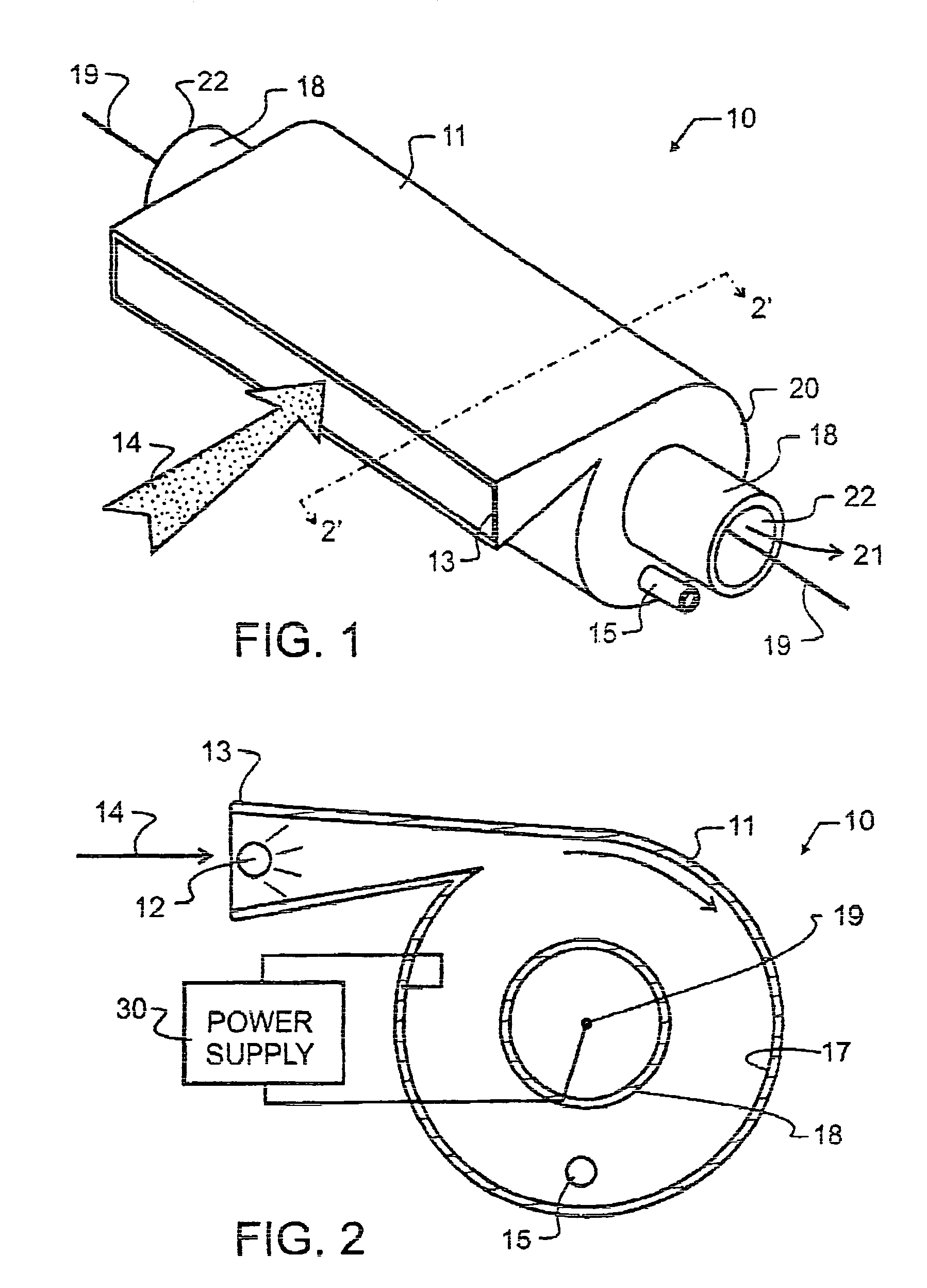Wet electro-core gas particulate separator
- Summary
- Abstract
- Description
- Claims
- Application Information
AI Technical Summary
Benefits of technology
Problems solved by technology
Method used
Image
Examples
Embodiment Construction
[0023]As illustrated in FIGS. 1 and 2, wet electro-core 10 includes a cylindrical separation vessel 11 having a triangular prism-shaped inlet passage 13 for admitting gas stream 14. While a number of other shapes besides the preferred triangular prism may be conceived for inlet passage 13, several desirable conditions should be met by the design. First, a means for introducing a mist or spray into gas stream 14, such as spray tube 12 illustrated in FIG. 2, will be provided. Most preferably, the induction of water droplets into gas stream 14 will be accomplished to minimize the separation of water from gas stream 14 and to prevent dripping or undesirable run-off from spray tube 12 within inlet passage 13. Where this dripping is not preventable, or as a preventative measure, drain means may be provided, and may, for exemplary purposes, couple into drain tube 15 described herein below. Most preferably, the droplets of water will be thoroughly admixed into gas stream 14 to provide a max...
PUM
 Login to View More
Login to View More Abstract
Description
Claims
Application Information
 Login to View More
Login to View More - R&D
- Intellectual Property
- Life Sciences
- Materials
- Tech Scout
- Unparalleled Data Quality
- Higher Quality Content
- 60% Fewer Hallucinations
Browse by: Latest US Patents, China's latest patents, Technical Efficacy Thesaurus, Application Domain, Technology Topic, Popular Technical Reports.
© 2025 PatSnap. All rights reserved.Legal|Privacy policy|Modern Slavery Act Transparency Statement|Sitemap|About US| Contact US: help@patsnap.com


